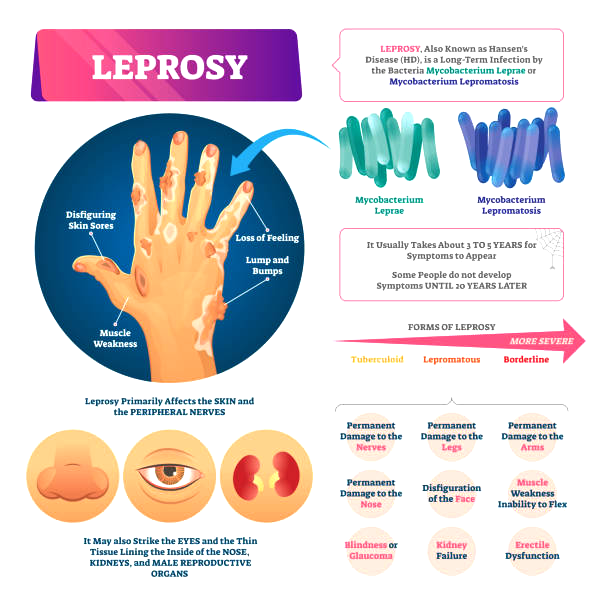World Leprosy Day 2023 | 31 Jan 2023
Why in News?
Every year last Sunday in January is observed as Leprosy Day. This year, it falls on 29th January. Leprosy is also known as Hansen's disease.
- The day is observed to provide an opportunity to lift up the voices of people affected by leprosy across the world.
What are the Key Points of the Day?
- Theme 2023: Act Now, End Leprosy.
- History: World Leprosy Day was established in 1954 by French philanthropist Raoul Follereau.
- Objective: The main objective was to raise awareness about leprosy disease and to teach people about this ancient disease that is now easily curable.
- Various people across the world are not aware of the disease, lack of access to basic medical care, and continued stigma surrounding the illness.
What is Leprosy?
- About:
- Leprosy is a chronic infectious disease which is caused by a type of bacteria called Mycobacterium leprae.
- Leprosy is a Neglected Tropical Disease (NTD) which still occurs in more than 120 countries, with more than 200000 new cases reported every year.
- Leprosy is a chronic infectious disease which is caused by a type of bacteria called Mycobacterium leprae.
- Symptoms:
- The disease mainly affects the skin, the peripheral nerves, mucosa of the upper respiratory tract and eyes.
- Transmission:
- Leprosy is transmitted via droplets, from the nose and mouth, during close and frequent contact with untreated cases.
- Treatment:
- Leprosy is curable with MDT (multi drug therapy) and treatment in the early stages can prevent disability. The disease is not hereditary, leprosy does not transmit from parents to children.
- Scenario:
- In 2021, as many as 1,40,000 new leprosy cases were reported, with 95% of new cases coming from the 23 global priority countries. Of these, 6% were diagnosed with visible deformities or grade-2 disabilities (G2D).
- Although leprosy affects both sexes, in most parts of the world males are affected more frequently than females, often in the ratio of 2:1, according to WHO’s Global Leprosy Report.
- Over 6% of the new cases were children under the age of 15.
- Despite a 10% increase in new cases from 2020 to 2021, the reported cases were 30% lower in 2021 than in 2019.
- This is not due to a decrease in transmission, but because the leprosy cases remained undetected due to Covid-19-related disruptions.
- Indian Efforts:
- In 2017, the government launched nationwide Sparsh Leprosy Awareness Campaign (SLAC) which aims at communicating the importance of early detection and treatment of leprosy.
- National Leprosy Eradication Programme (NLEP) focuses on both prevention and cure, especially in endemic regions. A Leprosy Case Detection Campaign was launched in March 2016, involving house-to-house screening and referral of patients for diagnosis.
- Introduction of an indigenously developed vaccine for leprosy into the NLEP. The vaccine, known as Mycobacterium indicus pranii (MIP), has been developed by National Institute of Immunology. This vaccine will be administered as a preventive measure to those staying in close contact with leprosy patients.
- Indian research contributed to the development of Multi-Drug Therapy or MDT, now recommended by WHO, which led to the shortening of treatment and higher cure rates.
- The fight against leprosy has to be measured against sensitivity displayed by society. Removal of the stigma is vital. More than laws, our attitude to leprosy has to change, doing away with discrimination.

